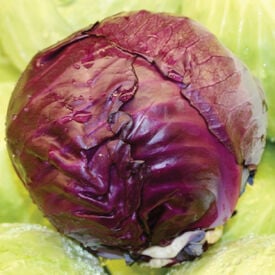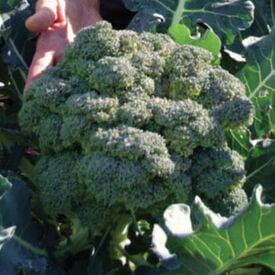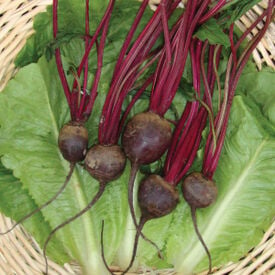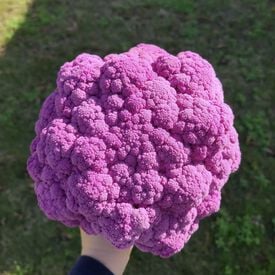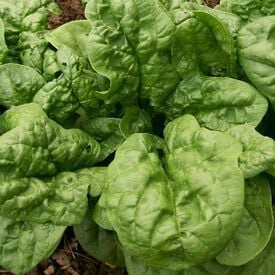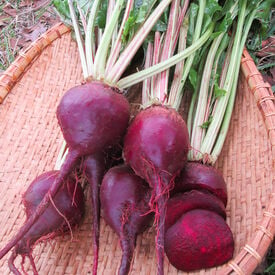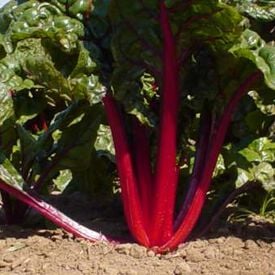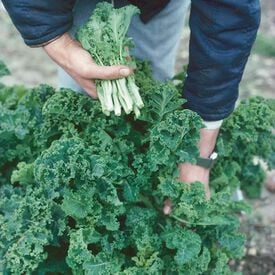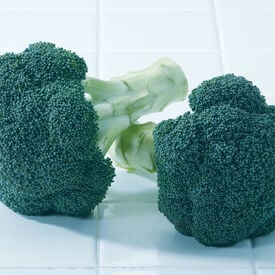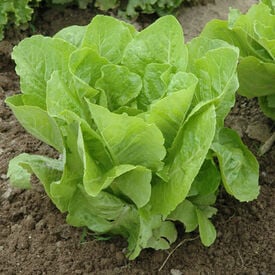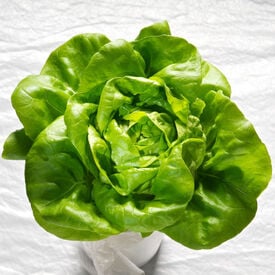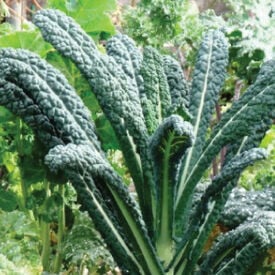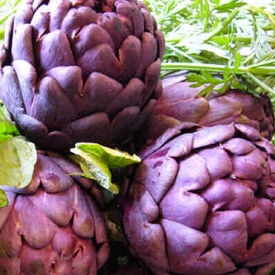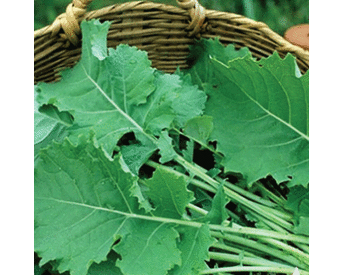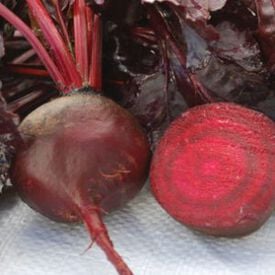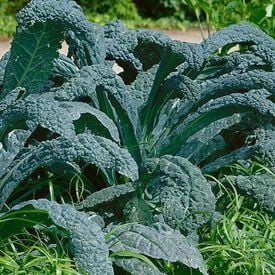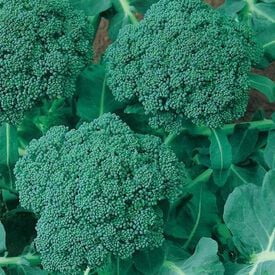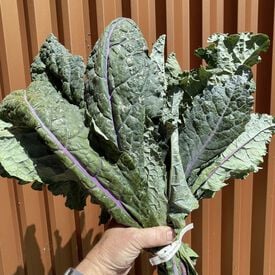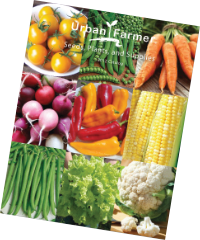Red Express cabbage seeds produce a variety of cabbage known for its vibrant purple-red color and compact, round heads. This variety is prized for its early maturity, typically reaching harvestable size in about 60-70 days. The heads are tightly packed and dense, with crisp, tender leaves that offer a mild, sweet flavor, making it ideal for both fresh consumption in salads and slaws or for cooking. Red Express cabbage is also known for its resistance to common cabbage pests and diseases, making it a robust choice for home gardeners. Additionally, it provides a good source of vitamins A, C, and K, as well as antioxidants.
The Fiesta is a beautiful, heavy yielding broccoli . Uniform plants are medium height, giving rise to 5-7" blue-green heads. Heavy yields that are disease resistant, which is definitely a reason to celebrate!
The Detroit Dark Red is the standard all-purpose heirloom beet! This is by far the most popular beet for home gardens. Detroit Dark Red has blood red flesh that is very sweet and tasty. Beets are perfectly round with no rings or streaks. Has 13-16" greens that are wonderful mixed into salads. Very prolific and good keeper. This heirloom was first introduced in 1892 by Mr. Reeves of Ontario, Canada.
The Graffiti cauliflower has a fun purple head with a great flavor! Graffiti produces a true deep purple head. This variety is a large cauliflower plant with dark green leaves and it produces best in the fall. It can also be planted in early spring. The Graffiti is very fun to watch grow and eat!
The Bloomsdale spinach is such an attractive, tasty, and a popular garden standard spinach. This variety is an old favorite amongst gardeners. It has an excellent flavor and produces large quantities of tasty leaves. Bloomsdale is also very nutritious with lots of Vitamin A, C, and iron and is low in calories.
The Lutz Green Leaf White Stem Beet is an attractive deep red variety with white stalks that is absolutely delicious when steamed or roasted. This beet is known for having huge glossy, deep green tops that are perfect for salads! This beet is a "winterkeeper" beet that has a long standing storage capability. The Lutz Green Leaf White Stem has 6 inches in diameter roots.
Ruby Red Swiss Chard is a beautifully deep red colored chard. This variety is great for people who want to grow controlled colors of different Swiss Chard. The Ruby Red is fast growing, very tasty and will add a pop of color to any garden!
The White Russian Kale is a delicious dark green oak leaf cut kale with white stems that is amazing when cooked or eaten raw. This variety has a crisp sweet flavor that only intensifies when it is cooked. This popular kale is also disease resistant.
Green Magic is a great summer and fall broccoli that is consistent performer. This broccoli matures mid-early and has wide adaptability to gardening zones. It has a semi-domed, tight head with medium-small bead size and a good plant habit.
The Jericho Lettuce is known for its great baby leaf production and is very tolerant to hot weather. This lettuce is a blonde romaine that can be grown for both baby leaf and full-size heads. This lettuce variety is very attractive with its bright light-green leaves. Jericho is tolerant to both heat and tipburn. Certified Organic. Learn more about our organic seeds.
Butter King Lettuce is slow to bolt or turn bitter. This varieties' light-green crisp 12-13 oz. butterheads do well in Midwest heat. The Butter King is a Boston type, but it is nearly twice as large and more tender. This lettuce grows vigorously with a good flavor and is disease resistant.
Lacinato kale, also known as dinosaur kale or Tuscan kale, is a leafy green vegetable characterized by its long, dark green, crinkled leaves. The leaves have a distinctive bumpy texture and are often a deep, rich shade of green, sometimes with a bluish tint. They grow on tall, upright stalks and have a slightly sweeter and milder flavor compared to other kale varieties. This type of kale is prized for its versatility in the kitchen. It can be eaten raw in salads, blended into smoothies, sautéed, or added to soups and stews. Lacinato kale holds up well to cooking without losing its texture, making it a favorite for both chefs and home cooks alike. Nutritionally, it's packed with vitamins A, C, and K, as well as minerals like calcium and iron, making it a powerhouse of health benefits. Its striking appearance and robust flavor make Lacinato kale a standout choice for any dish!
Violet is a French heirloom with fine flavor! Beautiful purple buds that are lovely on the big, ornamental plants, especially when the buds open. Rare outside Europe.
The Premier Kale, or also known as Early Hanover, is a high yielding kale with delicious and nutritious green leaves. This kale is early maturing that produces high amounts of smooth, dark green leaves. Plant Premier in the fall so that it produces higher yields and resists bolting 4 weeks longer. This kale's taste is a favorite and is extremely high in antioxidants and beta carotene!
Bull's Blood beet, scientifically known as Beta vulgaris, is a striking and versatile variety of beetroot that has gained popularity for its unique characteristics. This heirloom variety has a fascinating history, dating back centuries to Europe, where it was initially cultivated for its edible leaves rather than the root. Its name, "Bull's Blood," is derived from the deep burgundy-red color of its leaves, which resemble the color of ox blood. Over time, its sweet and earthy flavor profile has made it a favorite among chefs and home gardeners alike. In terms of appearance, Bull's Blood beets typically grow to a medium size, roughly 2-3 inches in diameter, and have a round to slightly flattened shape. The seeds of this variety are easy to come by and can be sown directly in the garden or started indoors. Bull's Blood beets are relatively quick to mature, taking about 50-60 days from seed to harvest. The leaves are a deep red, while the root itself is a dark purplish-red, making it visually appealing on the plate. Bull's Blood beets exhibit some resistance to common beet diseases like Cercospora leaf spot and Downy Mildew, although specific resistance levels may vary depending on growing conditions. When properly cared for, they can yield a plentiful harvest. To ensure optimal growth, it's recommended to space the beet plants about 2-4 inches apart in well-drained soil with full sun exposure. Adequate moisture and consistent watering are essential for healthy growth. Whether you're looking to add a pop of color to your garden or enhance your culinary creations, Bull's Blood beets are a delightful choice with a rich history and vibrant character.
The Lacinato Kale is an old Italian heirloom kale that has very large tender leaves. This favorite is now available in organic seeds! The Lacinato, or also known as Dinosaur kale, Black Magic or Toscano, is popular for home gardening and fresh markets. Its scaly, bumpy leaves are large dark blue-green and very delicious. Pick young for the most tender leaves. The Lacinato produces high yields and can be harvested continually. Certified Organic. Learn more about our organic seeds.
The Green Sprouting Calabrese produces large dark green heads bursting with flavor. This broccoli with is a favorite, that now is available as organic seed! Good in short season areas with cool nights. It will produce many lateral or side shoots over a long season. It is slow bolting with a flavor that can't be beat.
The Dazzling Blue Kale is a beautiful, cold-tolerant lacinato-type that produces large blue-green leaves with deep purple veins. This kale is sure to add a delicious pop of color to any salad! This variety will survive freezing temperatures better than other lacinato types and will even intensify with cool temperatures.
